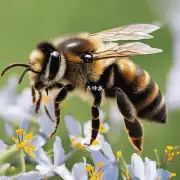How do bees protect themselves from predators?
董华
朗讯的创造力科技的原动力
Bees have evolved a variety of defense mechanisms to protect themselves from predators, including:
- Stinger: The stinger is a barbed structure that is used to inject venom into prey. Bees have evolved a variety of stinger modifications, including barbed, barbed-and-jointed, and barbed-and-segmented stingers. These adaptations make it difficult for predators to remove the stinger and prevent it from delivering venom.
- Honeydew: Honeydew is a toxic substance that bees use to deter predators. Honeydew is produced in glands on the bees' bodies and is injected into prey through the stinger. Honeydew is a very effective deterrent, and it can cause paralysis or death in predators that are stung.
- Coloration: Bees also use coloration to deter predators. Bees that are brightly colored are less likely to be attacked than bees that are dull-colored. This is because predators are less likely to be attracted to brightly colored prey.
- Camouflage: Bees can camouflage themselves by blending in with their surroundings. This makes it difficult for predators to spot them and attack them.
- Mimicry: Some bees mimic the appearance of other harmless insects, such as wasps or ants. Predators are less likely to attack bees that look like they are harmless.
These are just a few of the defense mechanisms that bees have evolved to protect themselves from predators. Bees are a fascinating and diverse group of animals that have evolved a wide range of adaptations to survive in a variety of environments.





